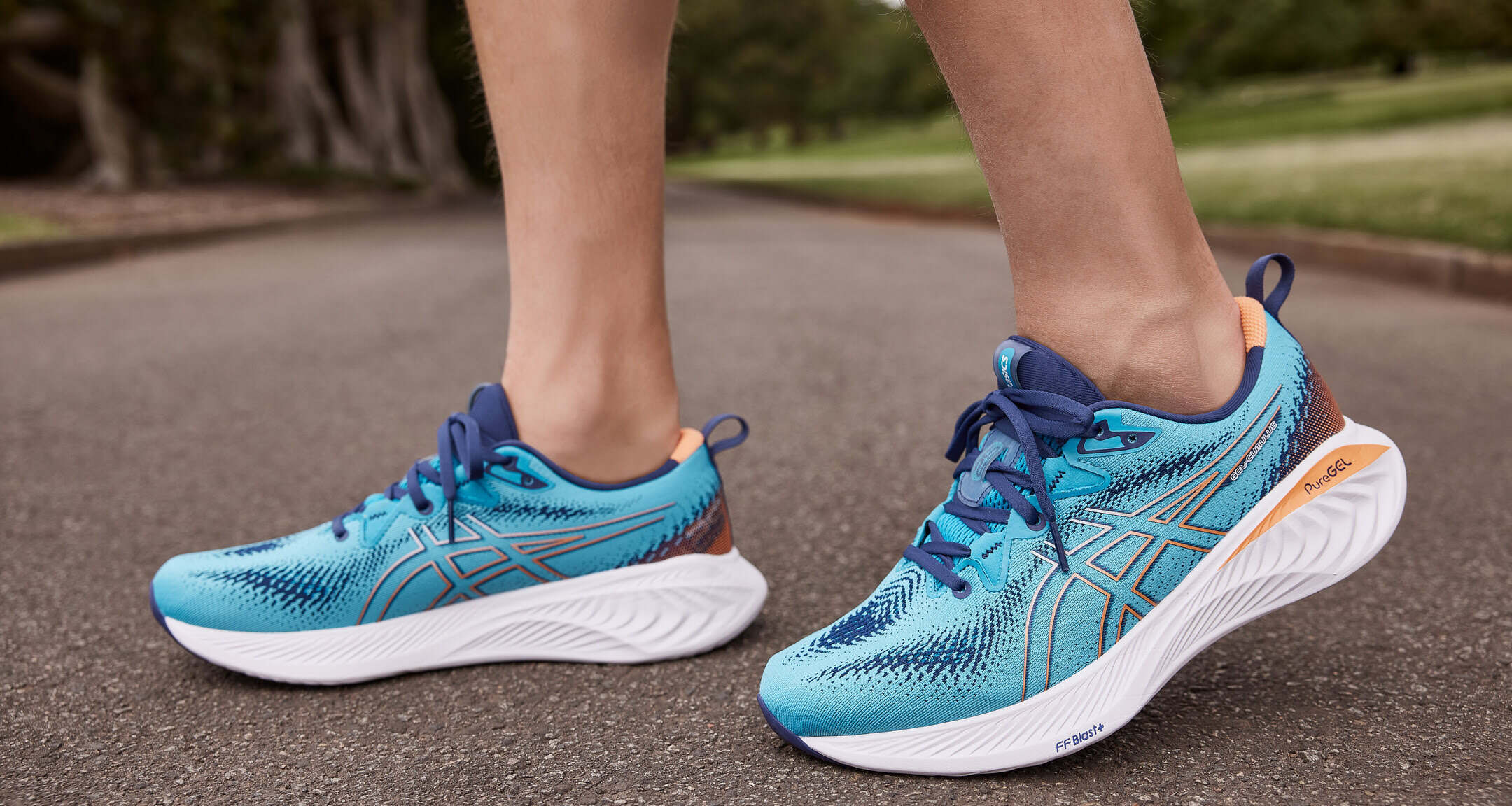 In determining how to choose a running shoe, your choice of running shoes can make the difference between having a good or bad experience, running in comfort or pain, and, most importantly, whether you stay healthy or get injured.
In determining how to choose a running shoe, your choice of running shoes can make the difference between having a good or bad experience, running in comfort or pain, and, most importantly, whether you stay healthy or get injured. The biggest and most common mistake I see novice runners make, (and yes, I made the same mistake), is to bargain shop for an inexpensive first pair of running shoes right off the shoe store clearance table, or worse, off the rack at a department store. After all, who wants to pay a lot for shoes when you may not actually use them much? How do you justify a higher priced running shoe to your spouse? Aren't you just paying a lot for a logo on the side?
All these observations make sense. But this kind of thinking will likely lead you to the equally logical decision to quit after a couple of miserable runs. The very tenacious among us may wait until they suffer a blown-out knee or serious shin, hip or foot problem. Forget bargains. What you need to start running is the right shoe, not the cheapest.
Choosing a running shoe can be an overwhelming task given all the high-tech shoes available today and all the
special features each running shoe claims to have.
That's why I've written this "Simple Steps for Choosing a Running Shoe" guide. Just follow the steps below, and you'll discover which running shoes are best for you.
- Understand Pronation
- Determine Your Foot Type
- Select Your Gait Type
- Choose the Right Running Shoe for You
- Go to a Local Speciality Running Store
- Ensure Your New Running Shoes Fit Properly
- Top Recommended Online Running Shoe Merchant
Understand Pronation
Pronation is the rolling of the foot from heel to toe through the foot strike. A proper or neutral pronation is hitting the outside of the heel and up to ball of your foot evenly across the front. This is how your footreduces the stress of impact.Underpronation is not enough evening out so the outside of your foot takes most of the shock instead of finishing in the neutral position.Overpronation is too much roll across from the outside to the inside of your foot.
To determine your level of pronation, look at your shoes you walk or run in. Most everyone will begin on the outside of the heel, the real indicator would be the wear on the forefoot.
If most of the shoe wear is:
- On the medial (inside) side then you Overpronate and probably need to choose Motion-Control Running Shoes
- On the lateral (outside) side then you Underpronate and most likely need to choose Cushioned Running Shoes
- Uniform across the forefoot then you have a Neutral Stride and are best suited for choosing Stability Running Shoes
Determine Your Foot Type
Another method of determining pronation and, ultimately, foot type is by checking your arch height. The easiest way to figure out your arch height is by using the Wet Test. To take the test, wet the bottom of each footand stand normally on a paper bag. After a minute or so, step off and observe the imprint left by your foot. (Trace the outline with a pencil if you want to look at it later.) You have a normal arch (neutral pronation) if:There's a distinct curve along the inside of your foot with a band a little less than half the width of your foot connecting the heel and toe. (Choose Stability Running Shoes)
You have a low arch (flat feet/overpronator) if:
There's not much of a curve along the inside of your foot and your imprint shows almost the entire foot. People with low arches are more likely to overpronate (roll too far inward), which can lead to overuse injuries. (Choose Motion-Control Running Shoes)
You have a high arch (underpronator) if:
There's a very sharp curve along the inside of your foot and your imprint shows a very thin band between your heel and toe. People with high arches typically don't pronate enough. (Choose Cushioned Running Shoes)
Select Your Gait Type
| | Top |
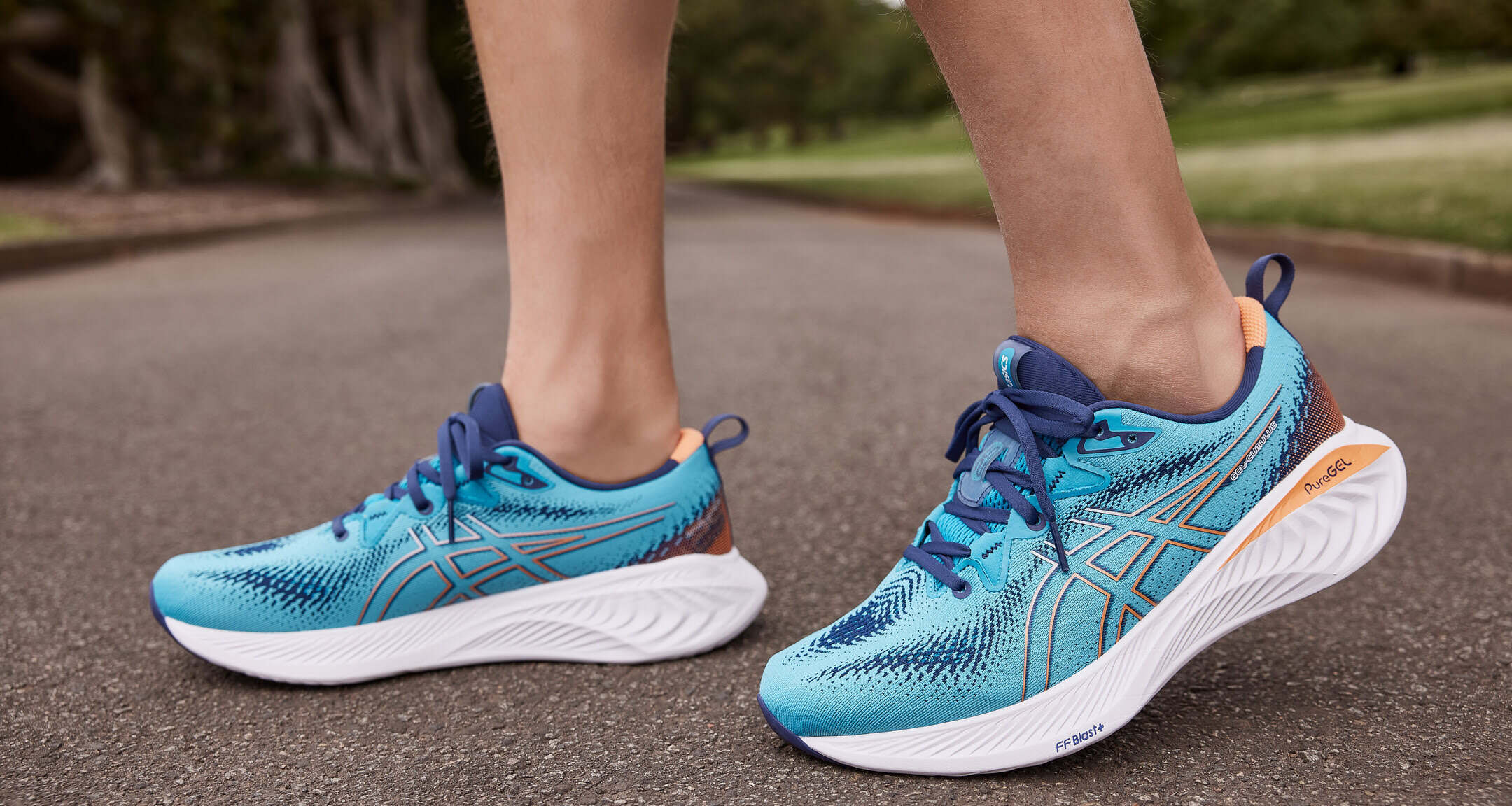 RightFoot | Severe Overpronation: The outside of the heel strikes the ground first and the foot rolls inwardexcessively which means the foot and ankle cannot properly stabilize the body. The best running shoes for moderate to severe Overpronators are Stability shoes (Men's| Women's) or Motion Control shoes (Men's| Women's)depending on the severity of overpronation. |
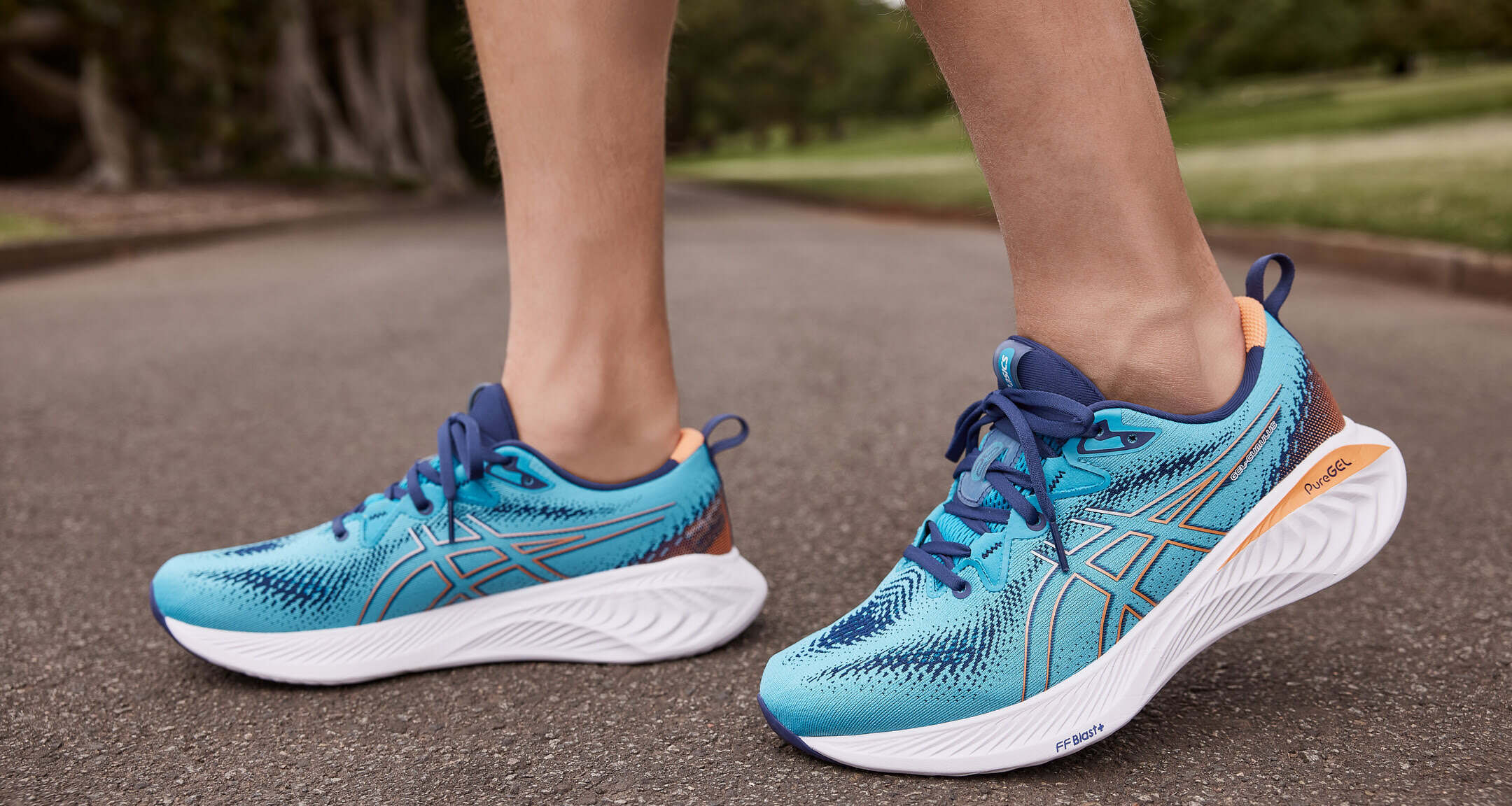 RightFoot | Mild Overpronation: The outside of the heel strikes the ground first and the foot rolls inward slightly absorbing the shock more effectively which allows the foot and ankle to properly support the body. This is the most common foot type. The best running shoes for Mild Overpronators are Stability shoes (Men's| Women's). |
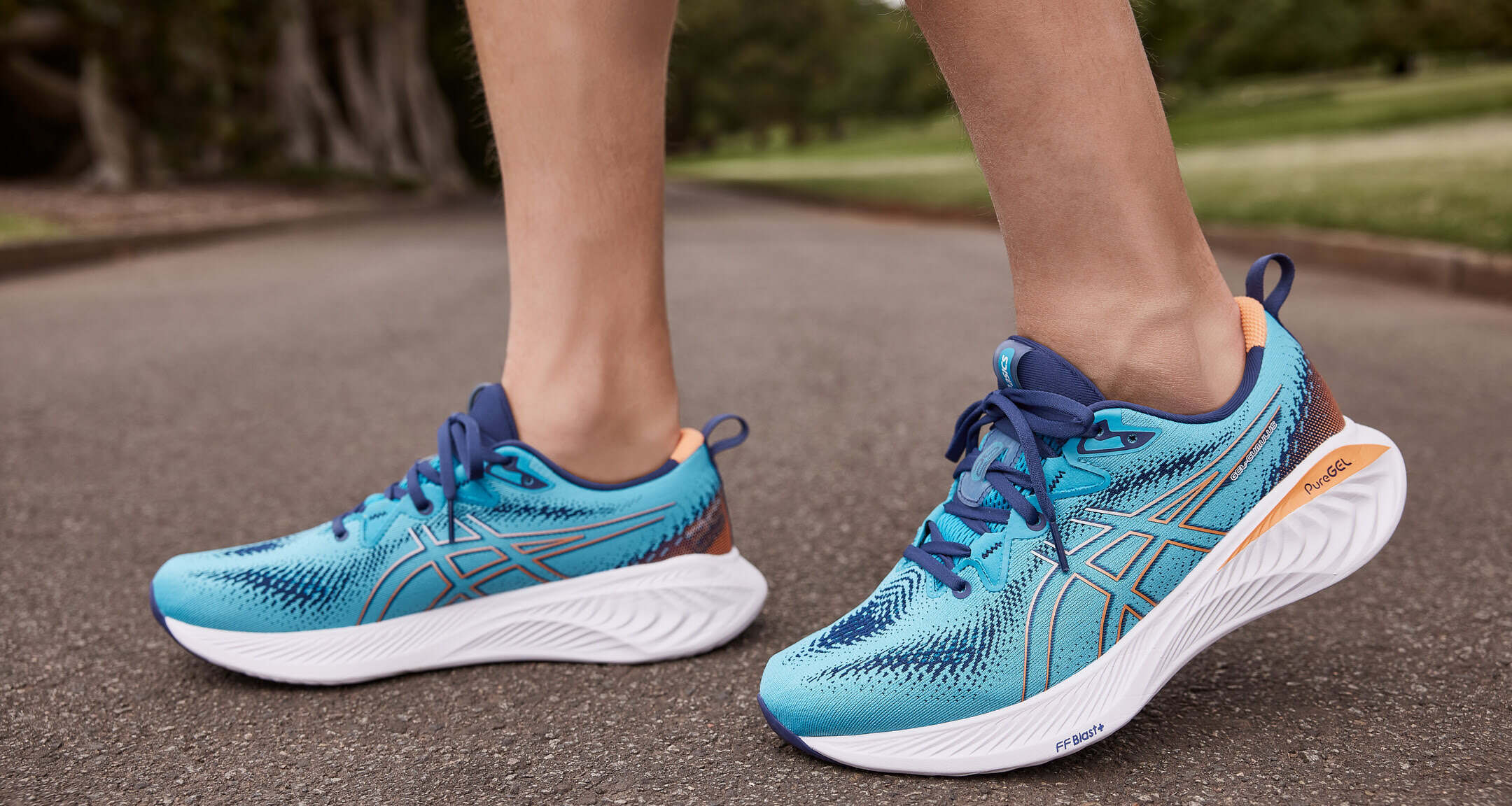 RightFoot | Neutral: The middle to slightly outward part of the heel strikes the ground first and the foot rolls inward slightly absorbing the shock more effectively which allows the foot and ankle to properly support the body. The best running shoes for Neutral runners are Neutral Cushioning shoes(Men's| Women's)for feet that are more rigid. |
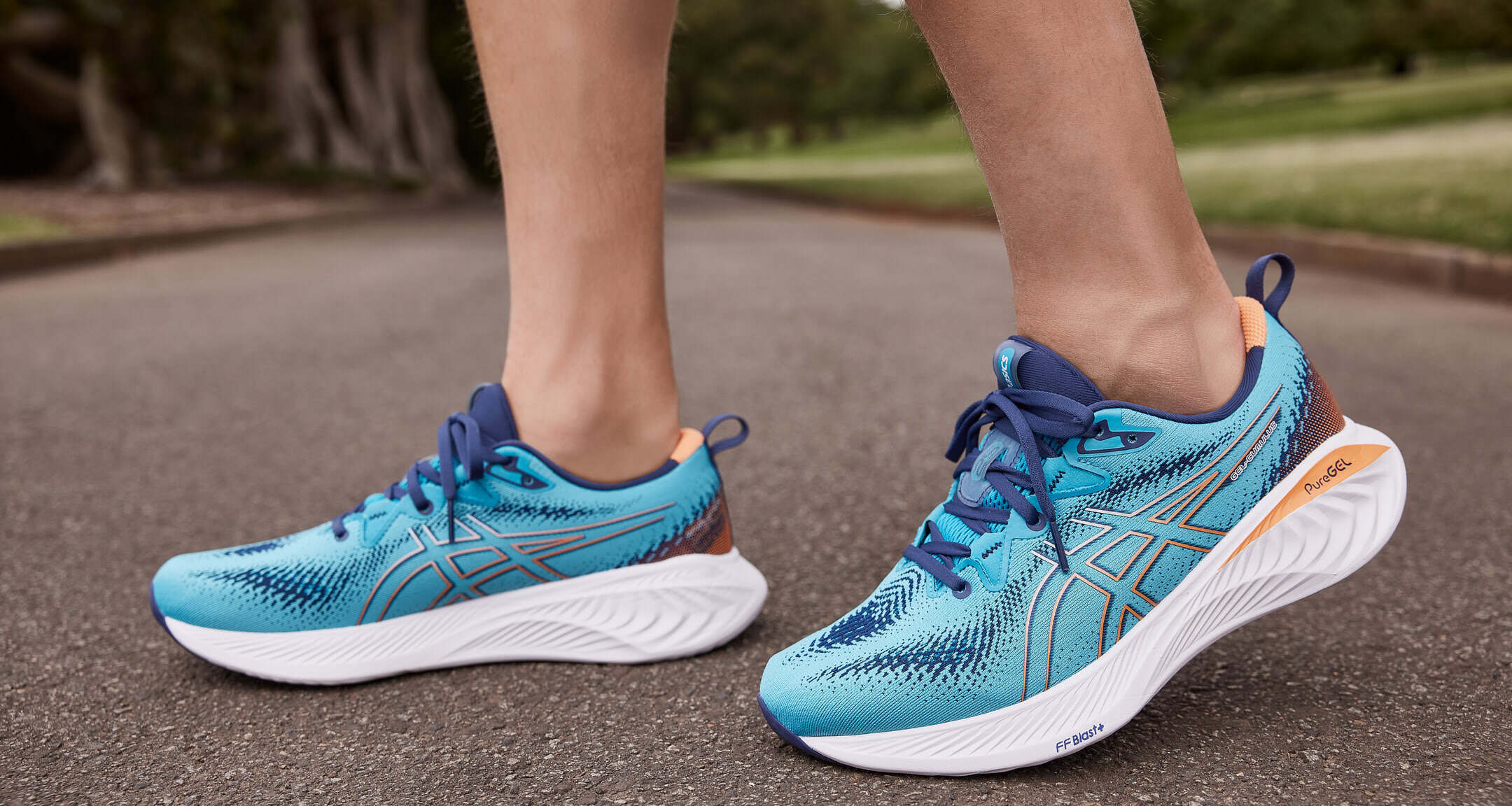 RightFoot | Supination: The outside of the heel strikes the ground first but the foot does not roll inward during the gait cycle. Instead it stays on the outside causing the impact to be concentrated on a smaller portion on the lateral side of the foot. The best running shoes for Supinators are more flexible Neutral Cushioning shoes (Men's| Women's). |
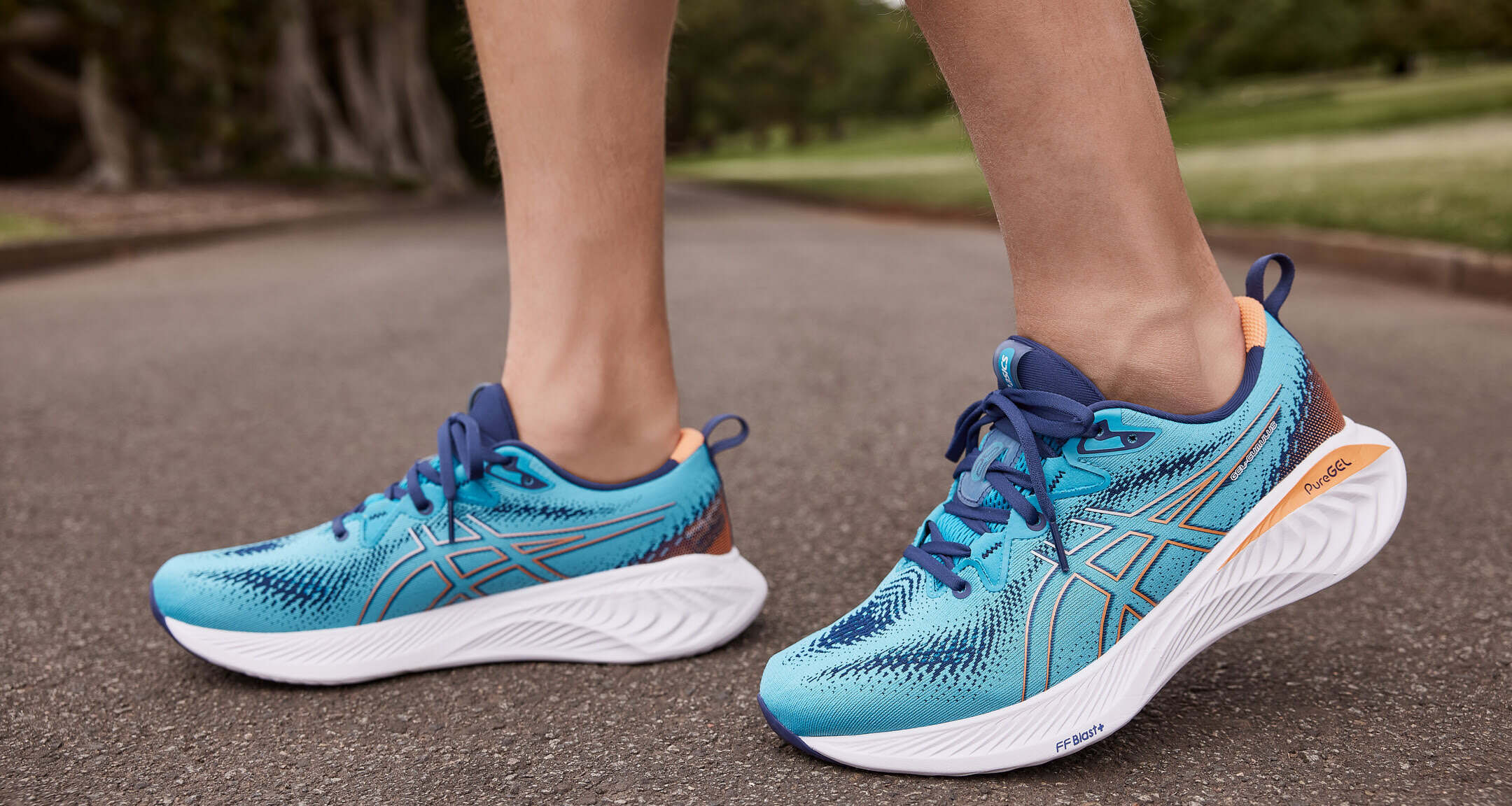
Choose the Right Running Shoe for You
Now that you've determined your foot type and degree of pronation, one other important characteristic you'll need to look for is shoe shape. You can see the shape most clearly by looking at the bottom of the shoe.Typically, running shoes come in three shapes (straight, semi-curved and curved) which correspond to the three types of prints revealed by the wet test. Most experts believe that:- Overpronators should choose a running shoe with a Straight shape.
- Underpronators should choose a running shoe with a Curved shape.
- Normal/Neutral pronators should choose a running shoe with a Semi-Curved shape.
If you have high-arched feet and underpronate, you should choose a Cushioned running shoe. Cushioned shoes allow your feet to roll inward (absorbing shock), have a curved shape to encourage foot motion and have the softest midsole with the least medial support.
If you have normal arches and pronate normally, choose a Stability running shoe. Stability shoes offer a good blend of cushioning, medial support and durability. They often have a semi-curved shape and don't control foot motion as strictly as motion-control shoes.
Finally, if you like to run fast and race seriously, you should choose a High Peformance running shoe (at least for race days). Performance shoes are lighter, built on a semi curved to curved last, have less cushioning, are lower to the ground, have a lower heel-to-toe ramp angle and lack the majority of cushioning and stability features of standard running shoes.
High Performance shoes are most suitable for 'serious' or elite racers. Their lack of stability and cushioning make them inappropriate for the vast majority of recreational runners.
Visual View of the Different Foot Types
For a video view of what we've been talking about previously, click below to learn about the different foot-types and the correct shoe for each of the three types:
Go to a Local Speciality Running Store
If you've followed all the steps listed above, you probably have a pretty good idea of what type of running shoe you should be looking for and how to choose running shoes. However, it still pays to go to a specialty running store (at least for your first running shoe purchase). The people who work in these stores are knowledgeable and will guide you to the appropriate shoe models.Here are some tips for a successful running shoe shopping trip.
- Shop in the late afternoon when your feet are at their largest. Your feet will expand while running.
- Bring your old shoes with you when you go shopping. Shoe wear will assist the salesperson in determining your degree of pronation.
- Wear or buy the socks you'll wear when you run.
- If you wear orthotics, bring them also. You need to see how the shoe fits with the orthotic inside.
- Do NOT make the most common mistake new runners make by buying the latest fad shoe. It is highly likely this will not be the ideal shoe for you.
- Make sure the salesperson measures both of your feet. Often, one foot is slightly larger than the other. You should be fitted for the larger foot.
- How long have you been running?
- How much mileage are you doing per week?
- Are you training for a particular event?
- Where do you do most of your running?
- How much do you weigh?
- Are you aware of any foot problems (i.e. flat feet, over- or underpronation)?
Ensure Your New Running Shoes Fit Properly
A proper fit is THE most important step in finding the right running shoe. A shoe that fits will be snug but not tight. A common mistake that's a killer is to buy shoes that are too small.Use the following guidelines to ensure a proper running shoe fit.
- Check for adequate room at the toebox by pressing your thumb into the shoe just above your longest toe. Your thumb should fit between the end of your toe and the top of the shoe.
- Check for adequate room at the widest part of your foot. The shoe shouldn't be tight, but your foot shouldn't slide around, either.
- The heel of your foot should fit snugly against the back of the shoe without sliding up or down as you walk or run.
- The upper (part of shoe that wraps around and over the top of the foot) should fit snugly and securely without irritating or pressing too tightly on any area of the foot.
- Once you've found running shoes that feel right, walk/jog/run in them as much as you can. Some stores have a treadmill, others allow a run around the parking lot and some don't let you do anything other than bounce up and down. You need to feel the shoes in action.
Top Recommended Online Running Shoe Merchant
Once you've found a running shoe that works for you, stick with it. New models are tempting but the right running shoes will help you avoid injury. If you know which running shoes are right for you and are ready to shop online, take a look at the following running shoe merchant.Listed below is my Top Recommendation:
- Zappos
Top notch selection of every kind of running shoe, great prices, FREE Shipping, FREE Return shipping, and 365-Day Return Policy.
Sacado de:
http://www.therunningadvisor.com/running_shoes.html
Excellent post! Very well explained. Thanks for sharing.
ResponderEliminarVery good article
ResponderEliminarThanks for sharing this informative information about running shoes for men with us. It's very helpful. Keep it up!
ResponderEliminar